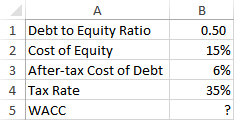Which of the following is NOT an advantage of using depth interviews compared to using focus groups in marketing research?
A) Depth interviews can uncover deeper insights than focus groups.
B) Depth interviews result in a free exchange of information that may not be possible in focus groups.
C) Depth interviews attribute the responses directly to the respondent, unlike focus groups, where it is often difficult to determine which respondent made a particular response.
D) With probing, it is possible to get at the real issue when topics are complex.
E) Skilled depth interviewers are inexpensive and easy to find compared to focus group moderators.
E
You might also like to view...
What should be the correct formula for cell B5?

a) =B2/(1-B1)+B3*B4*B1/(1-B1)
b) =B2/(1+B1)+B3*(1-B4)*B1/(1+B1)
c) =B2/(1+B1)+B3*B1/(1+B1)
d) =B2/(1-B4)+B3*B1/(1-B4)
e) =B2/(1-B1)+B3/(1-B1)
According to studies on wellness programs, which of the following is key for effectively implementing follow-up programs for employees with substance abuse problems?
A. Loss-control programs to account for reduced employee productivity B. Mechanisms in place to monitor and reinforce the recovery process C. Reduced responsibilities for rehabilitated employees D. Financial incentives to encourage employees to adhere to follow-up programs
The Fair Debt Collection Practices Act applies to:
a. all creditors attempting to collect debts b. all corporations attempting to collect debts c. merchants attempting to collect debts from their customers, but not to financial institutions d. debt collection agencies e. all of the other choices
Oriental Corporation has gathered the following data on a proposed investment project: Investment in depreciable equipment$200,000 Annual net cash flows $50,000 Life of the equipment 10yearsSalvage value$0 Discount rate 10%The company uses straight-line depreciation on all equipment. Assume cash flows occur uniformly throughout a year except for the initial investment.The payback period for the investment would be:
A. 2.41 years B. 10 years C. 4 years D. 0.25 years